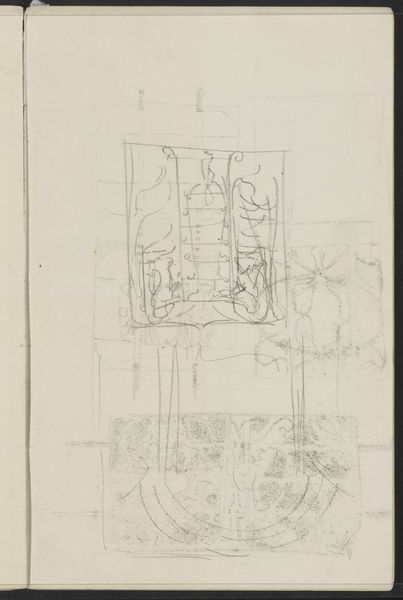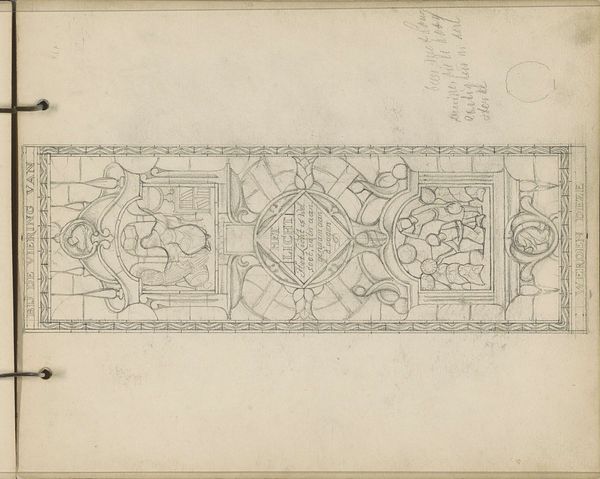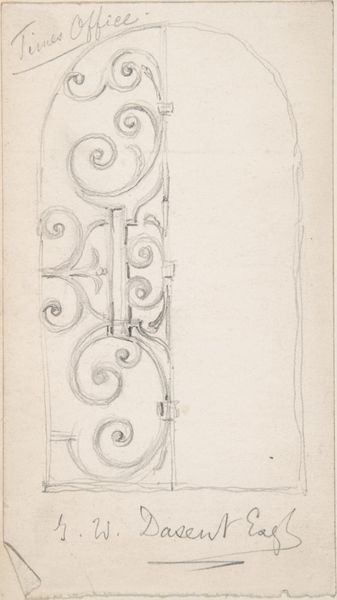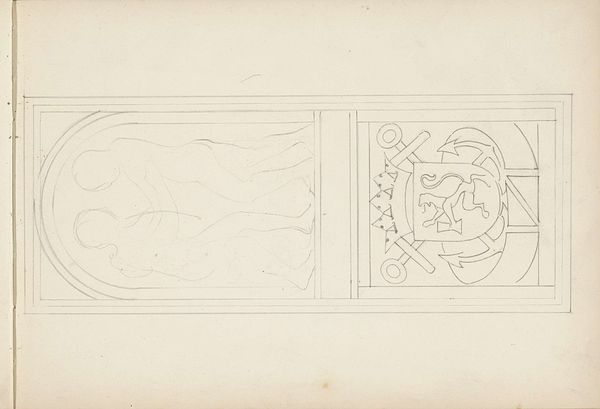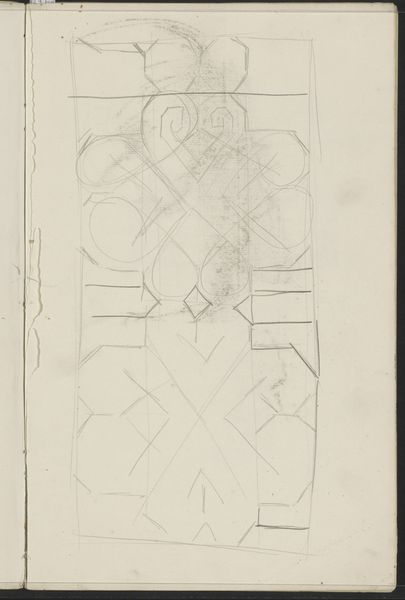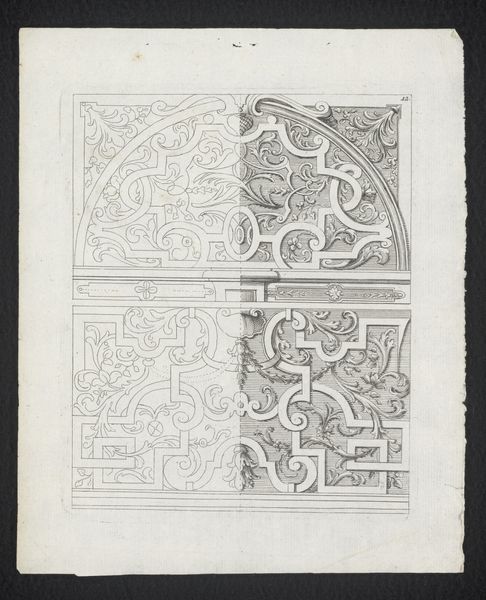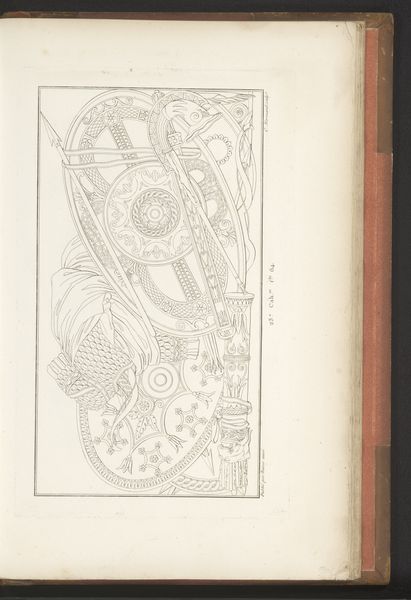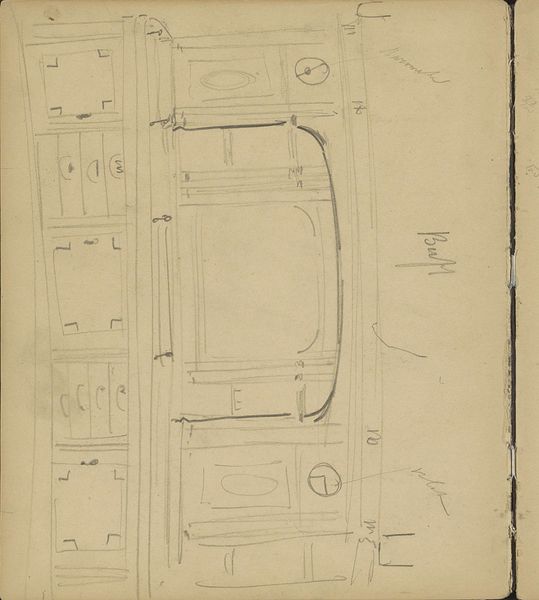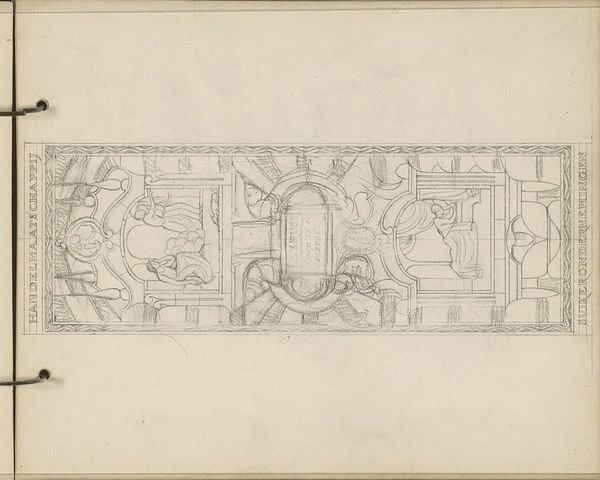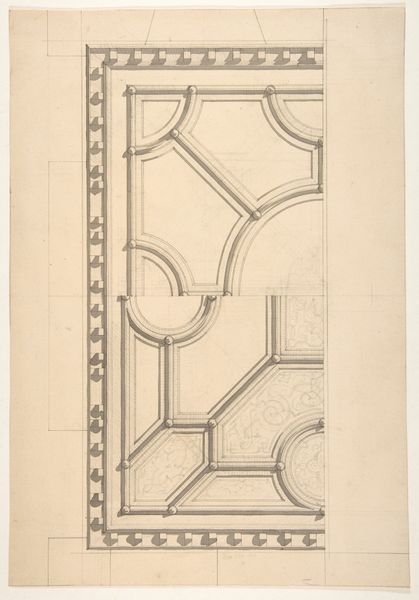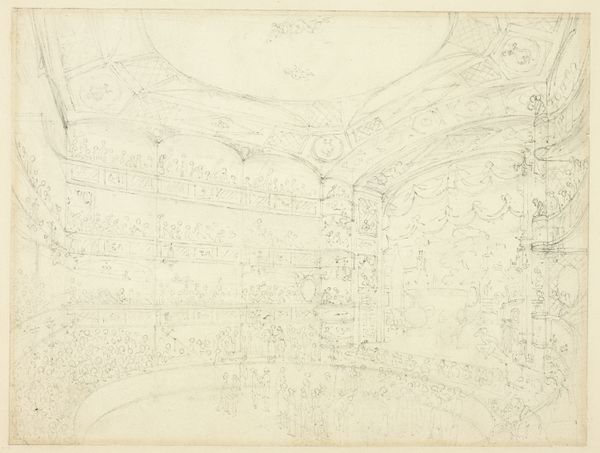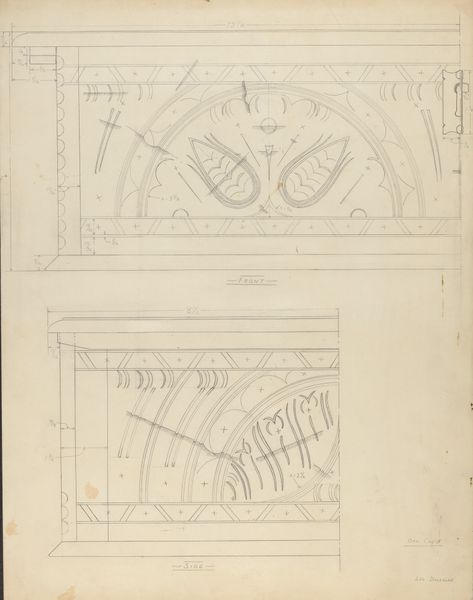
drawing, pencil
#
drawing
#
comic strip sketch
#
art-nouveau
#
quirky sketch
#
sketch book
#
personal sketchbook
#
idea generation sketch
#
sketchwork
#
ink drawing experimentation
#
geometric
#
pencil
#
sketchbook drawing
#
storyboard and sketchbook work
#
decorative-art
#
sketchbook art
Copyright: Rijks Museum: Open Domain
Curator: Welcome. We're looking at Gerrit Willem Dijsselhof’s, "Ontwerp voor een versierd kalenderblad", dating back to approximately 1901. It’s a pencil drawing, currently residing here at the Rijksmuseum. Editor: My first impression is one of intricate planning. There’s something beautifully vulnerable about seeing the raw bones of a decorative calendar. Curator: It's an intimate glimpse into the Art Nouveau movement’s design process, isn’t it? Dijsselhof, very active within that milieu, aimed to infuse every aspect of life with beauty through the decorative arts. Think of it: everything from furniture to, yes, calendars, became a canvas. Editor: And you can feel that aspiration here. But what I find particularly fascinating is the tension between the rigid grid of the calendar and the free-flowing, organic shapes in the decorative borders. It speaks to the desire to contain and order time, but also to adorn and celebrate it. Who was this calendar for? And how did its imagery influence our perception of labor and leisure back then? Curator: Exactly! The calendar served not just as a practical tool but as a vehicle for transmitting values, aspirations, or even a kind of visual propaganda. It becomes part of our daily environment and contributes to shaping our sense of identity and shared time. The choice of ornamental motifs would have very precise cultural meanings for the consumer. The distribution, or not, to certain social strata matters too! Editor: The choice of materials interests me here too—pencil, a medium that speaks to preliminary design, experimentation. This lends it a casual air that contrasts beautifully with the precision of the design's geometry. Is that casual air performative, a function of how and for whom art and design are produced and displayed in Dutch society? Curator: These types of decisions were usually related to his beliefs in unifying art and life. Dijsselhof strived for art’s accessibility, moving it away from elite circles, promoting its inclusion in daily existence. It all has repercussions beyond mere aesthetics. Editor: Right, and understanding that aim for accessibility informs my perspective. For example, who decided what kind of beauty, what type of accessibility was granted, and for whom? This sketch could inspire similar approaches towards design now! Curator: That’s insightful. His holistic approach saw beauty as integral to social wellbeing. Looking closer, the grid lines are not perfectly straight. And yet, the overall composition sings with harmony. Editor: This little drawing really makes you think. What appears functional ends up being highly intentional, but the drawing quality offers the sense of an artist making plans—plans with repercussions, nonetheless. Curator: Yes, a fascinating sketch into the ideas behind a design, full of promise and possibilities. Editor: Agreed. An artifact imbued with intent, awaiting final realization.
Comments
No comments
Be the first to comment and join the conversation on the ultimate creative platform.
